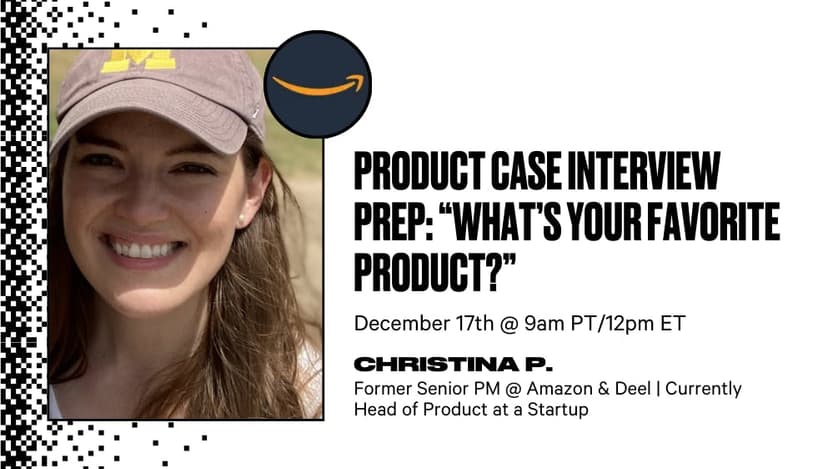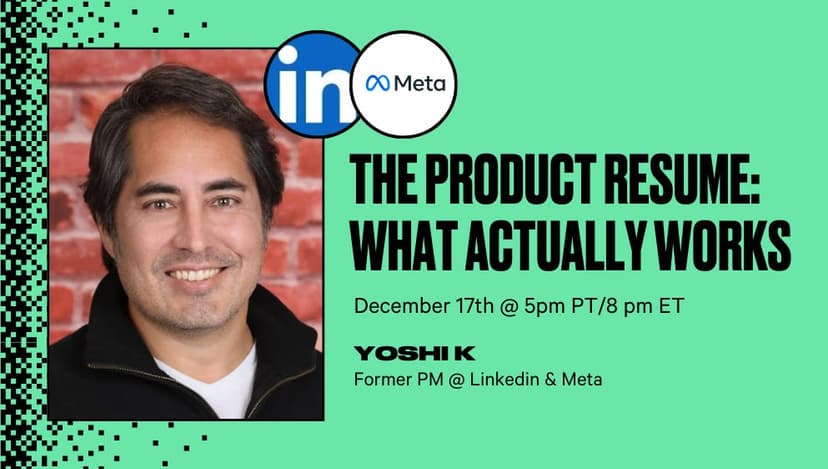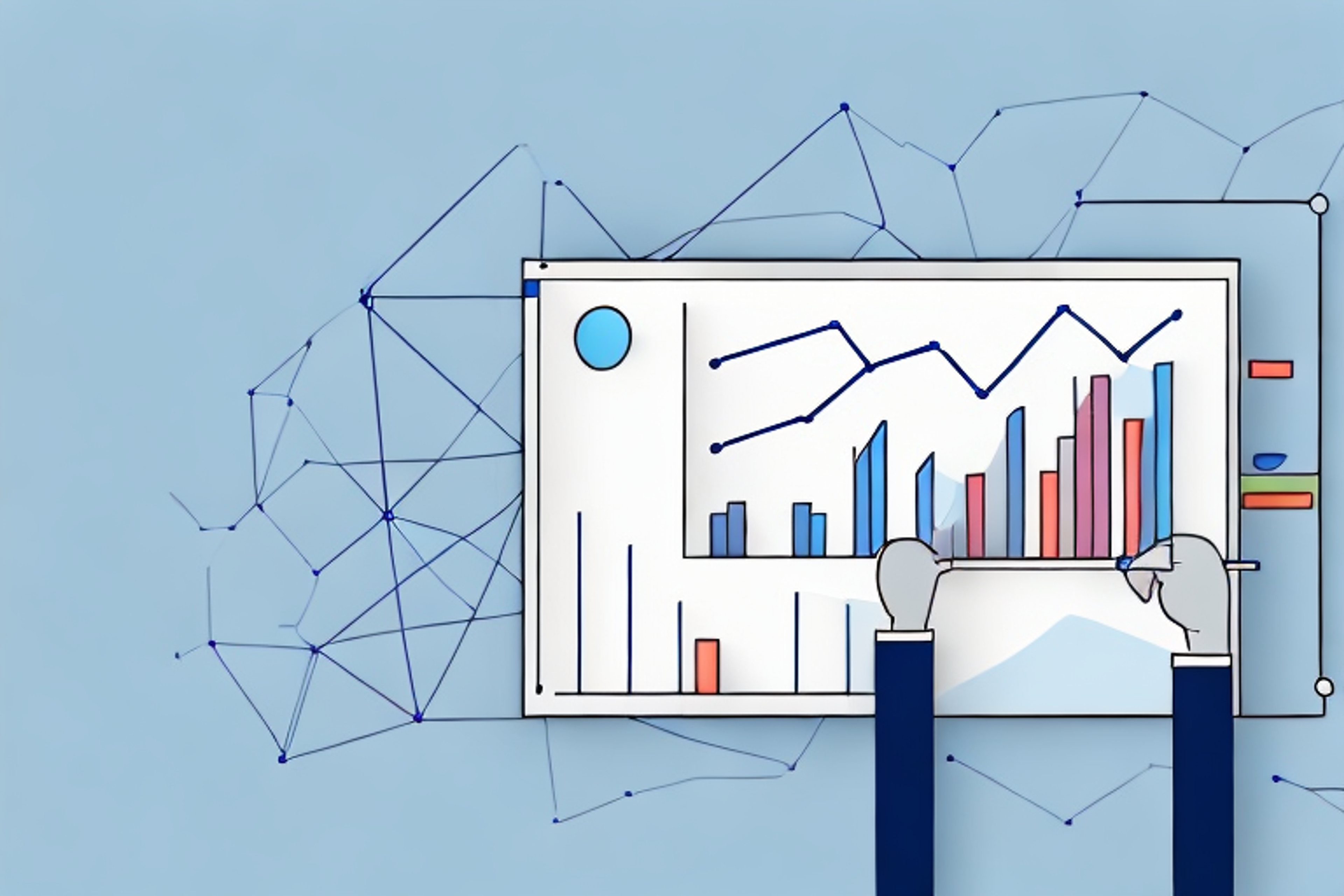How to Get Into the LinkedIn APM Program
Discover how to get into the LinkedIn APM Program with insider tips on the application process, interview prep, and key skills LinkedIn looks for in candidates.
Posted June 13, 2025

Join a free event
Learn from top coaches and industry experts in live, interactive sessions you can join for free.
Table of Contents
Are you dreaming of kickstarting your career in product management? The LinkedIn APM program might be your golden ticket. This sought-after opportunity opens doors for aspiring product managers to work with one of the world's leading professional networking platforms. It's a chance to learn, grow, and make a real impact in the tech world.
In this article, we'll walk you through everything you need to know about the LinkedIn Associate Product Manager program. You'll learn what the program is all about, the skills LinkedIn looks for, including technical and product expertise, and how to apply. We'll also give you the inside scoop on the interview process and share tips to boost your chances of getting in. Whether you're a recent grad or looking to switch careers, this article will help you take the first step towards your product management dreams at LinkedIn.
What is the LinkedIn APM Program?
The LinkedIn Associate Product Manager (APM) program is a two-year, rotational experience aimed at developing the next generation of product leaders. This program provides hands-on experience across various product teams, allowing participants to build their technical and product expertise while driving innovation at LinkedIn. APMs are mentored by senior leaders and given the opportunity to work on high-impact projects that shape LinkedIn’s product vision.
Read: The 25 Best Entry-Level Associate Product Manager (APM) Programs
Overview of the Program
The LinkedIn APM program is a two-year rotational journey designed to give you a deep dive into the world of product management. During this time, you'll have the chance to work on different teams and projects, gaining a wide range of skills and experiences.
Here's what you can expect from the program:
- Two 12-month rotations: You'll spend a year each on two different product teams. This setup allows you to learn about various aspects of LinkedIn's business and develop a well-rounded skill set.
- Impactful projects: As an APM, you'll play a key role in building LinkedIn's next generation of products. Your work will directly affect the experience of over 875 million global members.
- Strong support system: You won't be going it alone. The program provides a robust network of support, including managers, mentors, an APM-focused program team, and fellow APMs.
- Skill development: The program kicks off with a Product Bootcamp, where you'll learn essential skills like driving product strategy, creating roadmaps, and making data-driven decisions.
- Community building: LinkedIn values relationships, and the APM program reflects this. You'll have opportunities to build connections both inside and outside the office.
- Mentorship: Each APM is paired with a manager, an in-team mentor, and a mentor from a different team. You'll also get an "APM buddy" from the second-year cohort to show you the ropes.
The program is based in LinkedIn's San Francisco or Sunnyvale headquarters, putting you right in the heart of Silicon Valley's tech scene.
What sets the LinkedIn APM program apart is its focus on real impact. You'll own and develop specific feature sets, set principles for prioritization, and work with cross-functional teams to execute roadmaps. This hands-on experience is invaluable for your growth as a product manager.
The program also has a track record of success. After completing the two-year rotation, many APMs have gone on to grow their product careers at LinkedIn, becoming PMs, Chiefs of Staff, and even VPs. Some have been recognized in Forbes 30 under 30, while others have founded their own companies.
The LinkedIn APM program is more than just a job – it's a launchpad for your product management career. It offers a unique blend of learning, doing, and growing, all while contributing to a platform that shapes the global workforce.
What Skills and Qualifications LinkedIn Looks For in APMs
The LinkedIn APM program seeks candidates with a unique blend of technical knowledge, business acumen, and leadership potential. To stand out in this competitive field, you'll need to showcase a mix of hard and soft skills that align with LinkedIn's values and goals.
Skills
Hard Skills
LinkedIn values candidates with a strong technical foundation. While a computer science degree isn't mandatory, having technical coursework under your belt is a big plus. You should be comfortable with skills such as:
- Data analysis: The ability to analyze data is crucial for understanding user behavior and measuring product performance to guide decisions effectively.
- Product roadmaps: Creating and managing product roadmaps helps ensure that the development team is aligned with the long-term vision and business goals.
- Framework prioritization: Prioritizing frameworks allows you to determine which features or tasks will provide the most value to the user and the business.
- Metrics: Metrics help measure the success of a product by tracking user engagement, satisfaction, and overall performance.
- Data-driven decisions: Using data to inform decisions ensures that product changes are based on real insights rather than assumptions.
- A/B testing: Knowing how to conduct A/B tests allows you to compare different versions of a product feature to identify what works best for users.
Soft Skills
- Communication: You’ll need to clearly articulate your ideas both in writing and verbally.
- PRD creation/prioritization: The ability to create concise, well-organized Product Requirement Documents (PRDs) is essential.
- Teamwork and collaboration: As an APM, you’ll work closely with engineers, designers, marketers, and other stakeholders.
- Building strong relationships across teams is vital for successful collaboration and project execution.
The LinkedIn APM program is highly selective, typically accepting only 4 interns and 10-14 full-time APMs per cohort. By honing these skills and showcasing your unique strengths, you'll be better positioned to stand out in this competitive process.
LinkedIn APM Program Application Process
The application process for the LinkedIn’s APM program is highly competitive, with only a small percentage of applicants accepted each year. To boost your chances of success, it's crucial to understand the steps involved and how to make your application stand out. Candidates should craft a strong digital resume that highlights relevant experiences, especially any involvement in product management or leadership roles.
Demonstrating a technical background is a significant advantage, as LinkedIn APMs often work on cross-functional teams where both technical skills and strategic thinking are essential. Make sure to highlight any experience managing digital products or working closely with engineers to show you can excel in a product manager role.
Application Steps
- Online Application: The first step is to fill out an online application on the LinkedIn Careers website. This application will ask for your basic information, resume, cover letter, and transcript. It's essential to apply as soon as the application opens, as spots are limited and fill up quickly.
- Resume Review: LinkedIn recruiters will review your application, focusing on your resume and any relevant experiences. They often look for candidates with a mix of technical knowledge, leadership potential, and a passion for product management.
- Recruiter Screen: If your application catches their eye, you'll have a brief phone call with a recruiter. This call typically lasts about 15 minutes and focuses on your interest in LinkedIn, the APM program, and your background.
- Take-Home Assignment: Successful candidates will receive a take-home assignment. This is usually a product-related question with a two-page limit for your response. It's an opportunity to showcase your product thinking and analytical skills.
- Interview Rounds: Depending on whether you're applying for an internship or full-time position, you may have additional interview rounds. These could include behavioral interviews and product design questions.
- Final Onsite Interviews: The last stage typically involves a series of onsite interviews with different team members, including product managers and possibly executives.
The LinkedIn APM Interview
The interview process for the LinkedIn APM program is thorough and designed to assess your product management skills, leadership potential, and cultural fit. Understanding the stages and common questions can help you prepare effectively and increase your chances of success.
Interview Stages
- Recruiter Phone Screen: This initial 30-minute call focuses on your interest in LinkedIn, the APM program, and your background. Be ready to answer classic questions like:
- "Tell me about yourself"
- "Why do you want to work at LinkedIn?"
- Product Sense Interview: This 45-minute product sense interview challenges your product thinking abilities. Unlike traditional "Design X for Y" questions, the interviewer might explore your past experiences from a product perspective. They might ask about improvements you made to products you worked on or changes you'd suggest for your previous company. Know your resume inside out and be prepared to discuss your achievements in detail.
- Take-Home Assignment: You'll receive a prompt asking about your favorite product, why you like it, and potential improvements. The challenge here is to communicate effectively within the given constraints (2 pages, 11-point font, double-spaced). Consider using tables, graphs, or color to highlight key points and make your submission stand out visually.
- Final Round Interviews: This stage consists of several 30-minute interviews focusing on different aspects:
- Product Sense: Expect questions about product design and metrics.
- Product Execution: Be prepared to discuss how you'd implement product ideas.
- Leadership/Behavioral: You might face hypothetical situations to assess your leadership skills.
- Ecosystem: This tests your knowledge of LinkedIn's products and business lines.
Read: How to Nail “Tell Me About a Time…” Interview Questions
Common LinkedIn APM Interview Questions
Here are some questions you might encounter during the LinkedIn APM interviews:
- What did you do to improve the product you worked on in your previous role?
- If you could change anything about your previous company, what would it be?
- Design X for Y" (where X is a product feature and Y is a specific user group)
- What metrics would you measure for X product?
- Your team has an important deadline but lacks resources. What do you do?
- What do you think is the most important feature on LinkedIn?
To prepare, research LinkedIn's business lines (both B2B and B2C) and understand how they work together. Familiarize yourself with key LinkedIn stats, such as the number of members (774 million) and companies (58 million) on the platform. LinkedIn values data-driven decision-making. If possible, quantify your results and use LinkedIn-specific terminology like "True North metrics" or "Signpost metrics" in your responses. Lastly, research your interviewers' LinkedIn profiles beforehand. This can provide valuable insights into their interests and help you build a natural connection during the interview.
The Bottom Line
Getting into the LinkedIn APM program is a big challenge, but it's totally worth it if you're passionate about product management. This program gives you a chance to learn from the best, work with world class product managers, a chance to work on some innovative products on LinkedIn Marketing Solutions and make a real difference. Remember, it's not just about having the right skills – it's also about showing your enthusiasm for LinkedIn and its mission.
As you prep for the application process, focus on highlighting your strengths and unique experiences. Practice those product design questions, brush up on your data analysis skills, and don't forget to tell your own story. With hard work and a bit of luck, you could be on your way to kickstarting an awesome career in product management at LinkedIn. Good luck!
Read:
FAQs
How can I qualify for the LinkedIn APM program?
- Candidates interested in the LinkedIn APM program should possess a Bachelor's or Master's degree in fields like Computer Science, Business, Marketing, Data Science, or related disciplines. Strong communication skills are essential, and prior experience in software development or customer-facing roles is highly preferred.
What does an APM do?
- An Associate Product Manager (APM) is responsible for working on key aspects of product development, from defining the product vision to execution. They collaborate with cross-functional teams such as engineering, design, and business operations to bring products to market. APMs play a key role in driving innovation while ensuring that the product aligns with both user needs and economic opportunity.
What is APM role in it?
- In APM programs, the role of an Associate Product Manager (APM) involves working with product teams to deliver solutions that meet user needs. This includes handling the entire product lifecycle, from conceptualization to launch, while understanding business operations and customer pain points. APMs in tech companies also collaborate with engineers and data scientists to create products that serve the world’s workforce.
What is an APM profile?
- An APM profile typically includes a mix of technical skills, problem-solving abilities, and an understanding of product management. Candidates often come from backgrounds in business operations, technology, or have experience working in startups or even venture capital. Additionally, strong communication skills and the ability to collaborate across teams are essential for thriving in APM programs.
How do I get into APM?
- Getting into an APM program requires a solid foundation in product management or relevant experience in business operations, technology, or entrepreneurship. Applicants should have a strong digital resume, demonstrate leadership potential, and show an understanding of how to bring products to market. Networking and a passion for creating products that drive economic opportunity can also increase your chances of acceptance.
What is the APM program?
- An APM program is a structured two-year rotational program designed to train the next generation of product managers. The program structure typically includes hands-on work across various teams and exposure to key business areas, providing a holistic view of product development. These programs are offered by major tech companies to groom future leaders who can shape products.
How competitive is the APM program?
- APM programs are highly competitive, with only a small percentage of applicants being selected each year. Given their focus on developing future leaders in product management, these programs often attract top talent from tech, venture capital, and business operations backgrounds. Applicants need to stand out with strong resumes, problem-solving skills, and a demonstrated passion for building impactful products.
Is APM entry level?
- Yes, the APM role is considered an entry-level position in product management, but it is highly selective.
Browse hundreds of expert coaches
Leland coaches have helped thousands of people achieve their goals. A dedicated mentor can make all the difference.

























